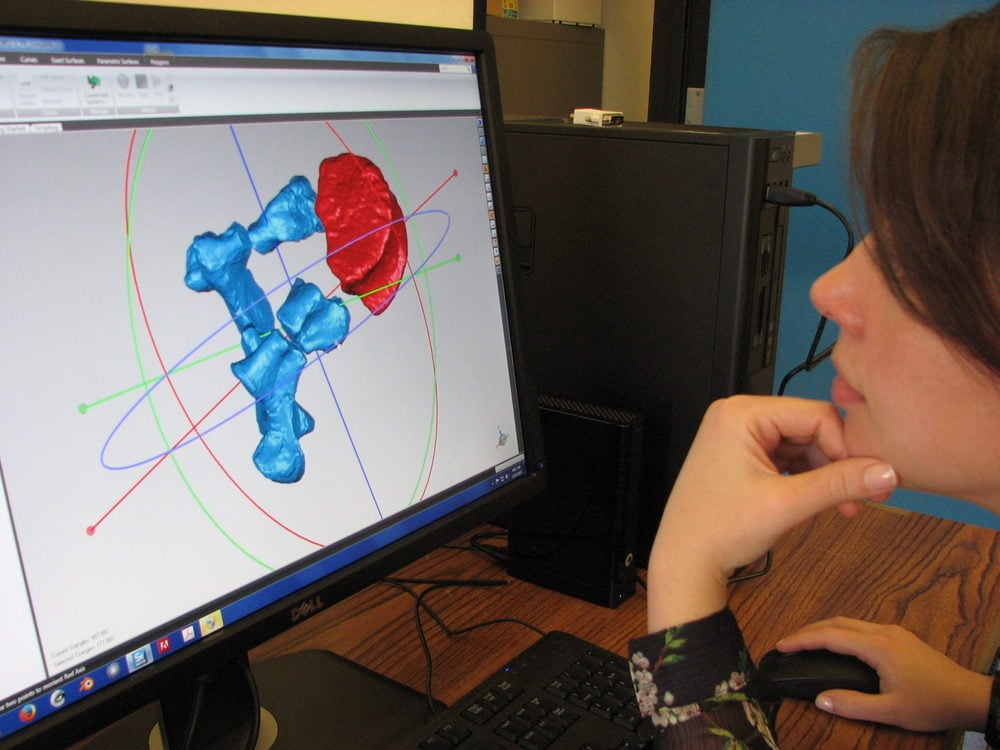Grantee Spotlight
The next grantee from our spring 2015 cycle is Thierra Nalley from the California Academy of Sciences. Her project is entitled “Ontogeny of the thoracolumbar transition in extant hominoids and Australopithecus.”
 Thierra Nalley and a digital reconstruction of the fossil hominin DIK 1-1
Thierra Nalley and a digital reconstruction of the fossil hominin DIK 1-1
Walking on two legs, or bipedalism, is a hallmark adaptation of the human lineage. A requirement for efficient bipedalism is the ability to balance the head and torso over the hips and legs. The shape of spinal column vertebrae help make this possible, but how these vertebrae develop, and what causes variation in development, is poorly understood.
Our study will compare human vertebral anatomy to that of our closet living relatives, the apes, and demonstrate how differences in shape are achieved during development, from infants to adults. Understanding the relationships between vertebral shape, skeletal growth, and the development of adult locomotor behavior is directly relevant to many paleoanthropological questions, including those related to the origin of bipedality.
 Age sequence (adult to infant, left to right) of human, first lumbar vertebrae
Age sequence (adult to infant, left to right) of human, first lumbar vertebrae
Results from this study will produce data on traits that may reflect an individual’s behavior and thus inform the continuing debate concerning the role of apelike traits observed in early human ancestors (i.e., were these traits simply primitive features retained from ancestors, or were they an important component of these species’ biology and behavior?). The inclusion of the juvenile Australopithecus afarensis DIK-1-1 specimen in our sample is particularly significant, because the developmental stage of the individual and its excellent preservation provides the rare opportunity to compare juvenile and adult Australopithecus afarensis anatomy. Furthermore, this project will capture and analyze, for the first time concurrently, key functional features across the vertebral column, many of which determine how vertebrae move. Documenting their development and co-variation will provide a more comprehensive understanding of spinal biomechanics.


